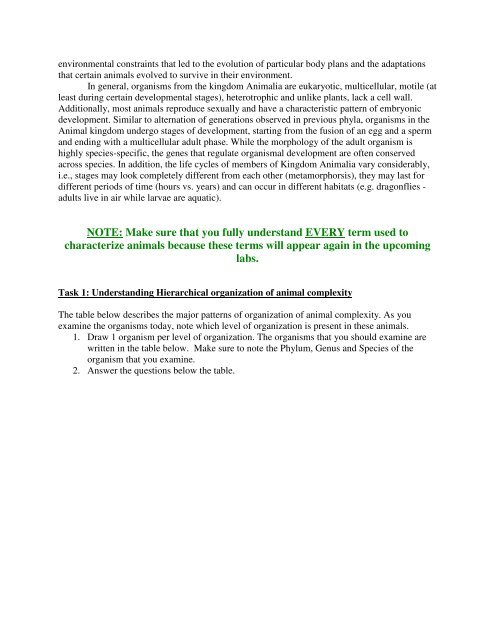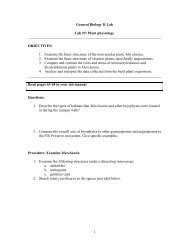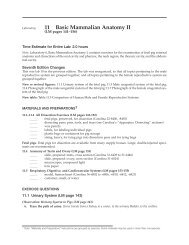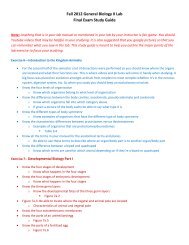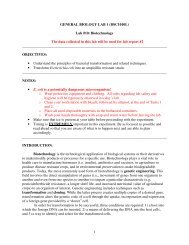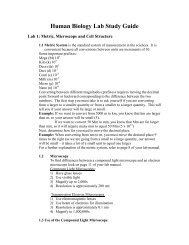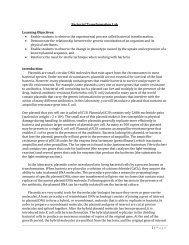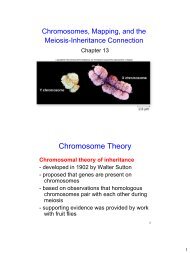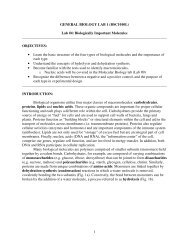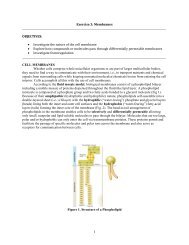Lab #7: Introduction to the Kingdom Animalia Objectives: 1 ...
Lab #7: Introduction to the Kingdom Animalia Objectives: 1 ...
Lab #7: Introduction to the Kingdom Animalia Objectives: 1 ...
You also want an ePaper? Increase the reach of your titles
YUMPU automatically turns print PDFs into web optimized ePapers that Google loves.
environmental constraints that led <strong>to</strong> <strong>the</strong> evolution of particular body plans and <strong>the</strong> adaptations<br />
that certain animals evolved <strong>to</strong> survive in <strong>the</strong>ir environment.<br />
In general, organisms from <strong>the</strong> kingdom <strong>Animalia</strong> are eukaryotic, multicellular, motile (at<br />
least during certain developmental stages), heterotrophic and unlike plants, lack a cell wall.<br />
Additionally, most animals reproduce sexually and have a characteristic pattern of embryonic<br />
development. Similar <strong>to</strong> alternation of generations observed in previous phyla, organisms in <strong>the</strong><br />
Animal kingdom undergo stages of development, starting from <strong>the</strong> fusion of an egg and a sperm<br />
and ending with a multicellular adult phase. While <strong>the</strong> morphology of <strong>the</strong> adult organism is<br />
highly species-specific, <strong>the</strong> genes that regulate organismal development are often conserved<br />
across species. In addition, <strong>the</strong> life cycles of members of <strong>Kingdom</strong> <strong>Animalia</strong> vary considerably,<br />
i.e., stages may look completely different from each o<strong>the</strong>r (metamorphorsis), <strong>the</strong>y may last for<br />
different periods of time (hours vs. years) and can occur in different habitats (e.g. dragonflies -<br />
adults live in air while larvae are aquatic).<br />
NOTE: Make sure that you fully understand EVERY term used <strong>to</strong><br />
characterize animals because <strong>the</strong>se terms will appear again in <strong>the</strong> upcoming<br />
labs.<br />
Task 1: Understanding Hierarchical organization of animal complexity<br />
The table below describes <strong>the</strong> major patterns of organization of animal complexity. As you<br />
examine <strong>the</strong> organisms <strong>to</strong>day, note which level of organization is present in <strong>the</strong>se animals.<br />
1. Draw 1 organism per level of organization. The organisms that you should examine are<br />
written in <strong>the</strong> table below. Make sure <strong>to</strong> note <strong>the</strong> Phylum, Genus and Species of <strong>the</strong><br />
organism that you examine.<br />
2. Answer <strong>the</strong> questions below <strong>the</strong> table.


